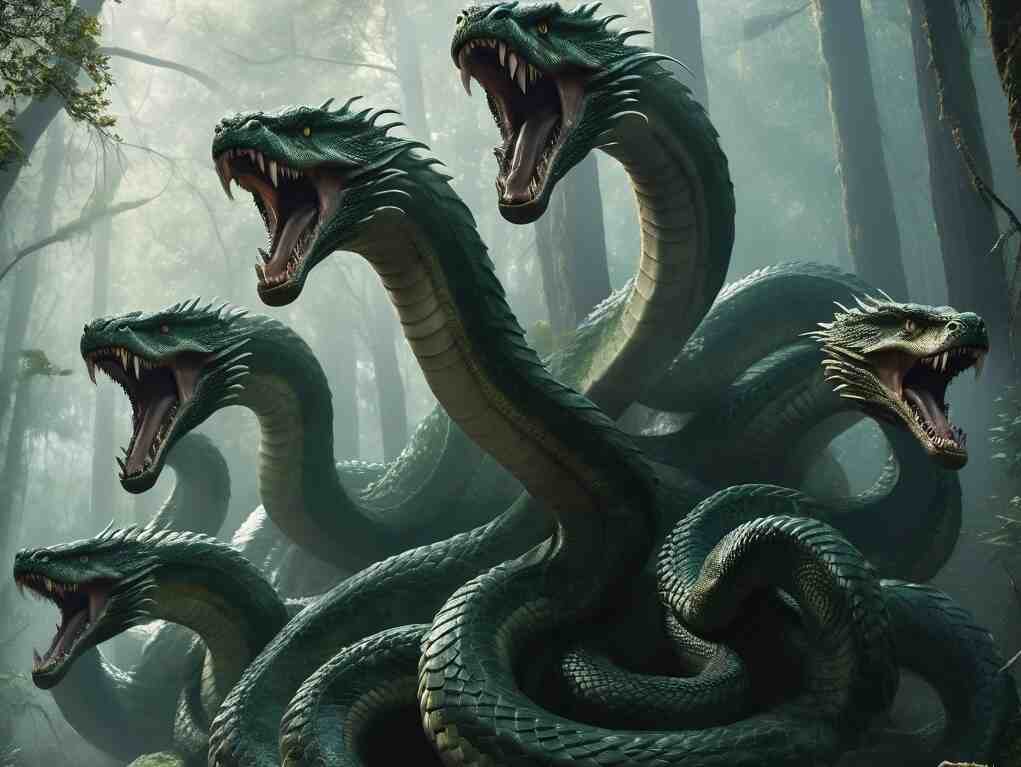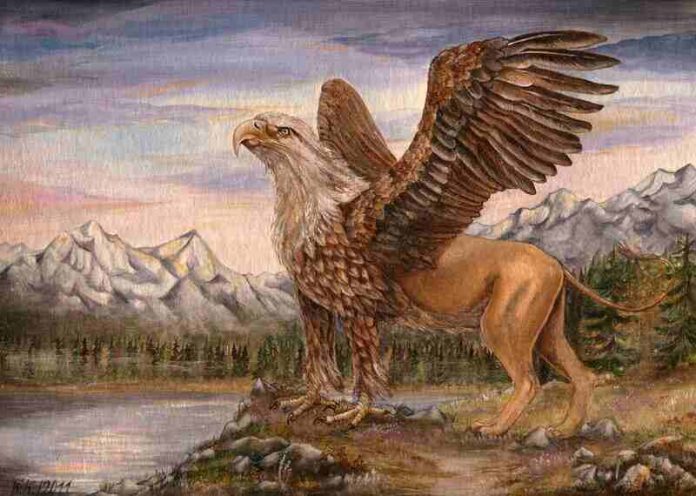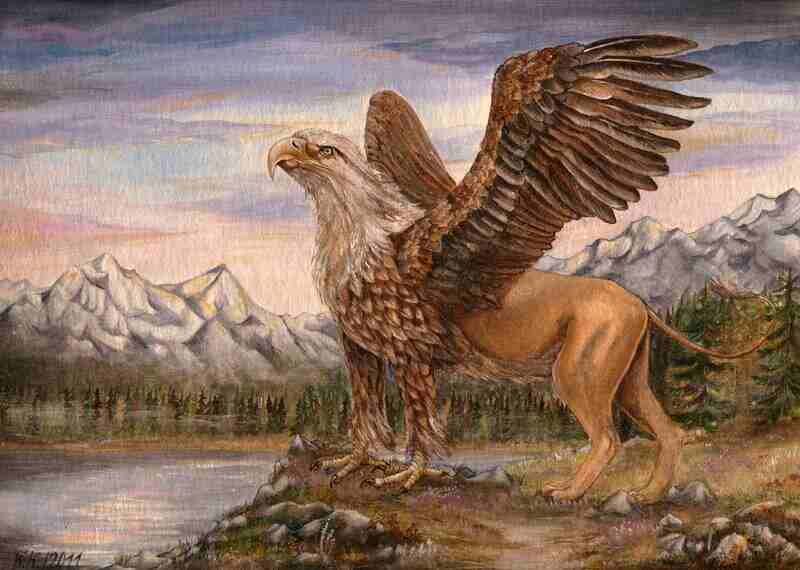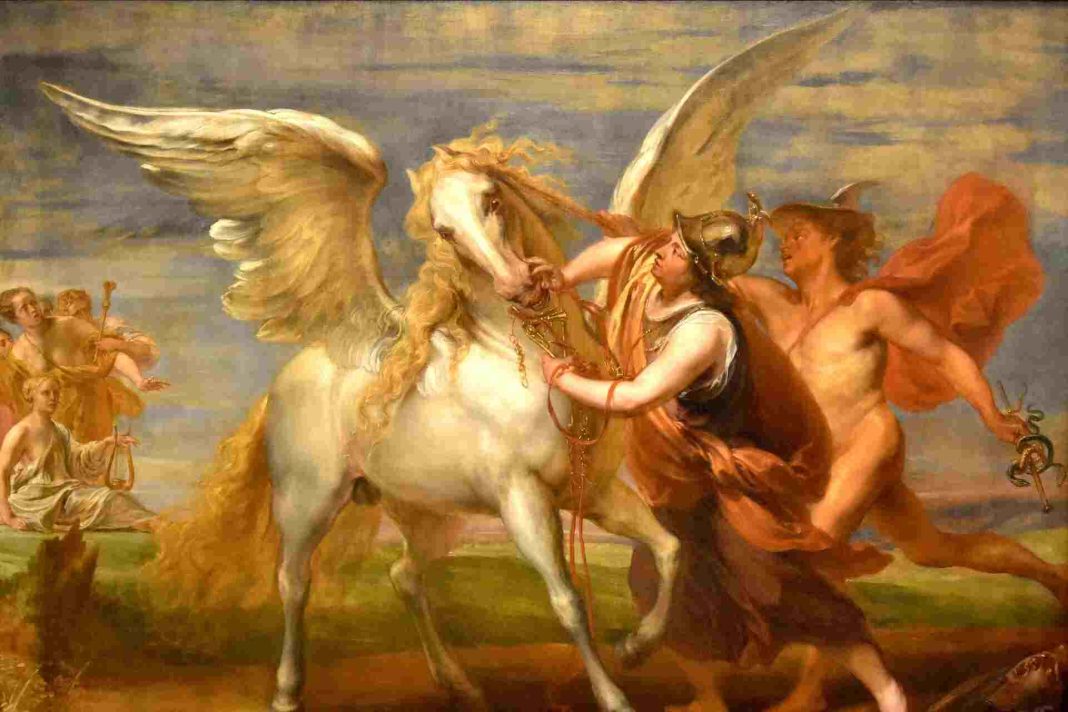The Lernaean Hydra, a legendary multi-headed serpent from Greek mythology, has long intrigued historians and mythologists. Known for its regenerative abilities and formidable venom, this creature posed a significant challenge even to the mighty Hercules. In this article, we delve into the top five scientific and historical mysteries surrounding the nine-headed monster, exploring its origins, powers, and enduring influence on modern culture. Uncover the enigmatic aspects of the Lernaean Hydra that continue to fascinate scholars and enthusiasts alike.
The Origin and Myth of the Lernaean Hydra
In the vast tapestry of Greek mythology, the tale of the Lernaean Hydra stands out for its sheer terror and mythical significance. The Hydra, a serpentine water monster, was said to inhabit the dark, marshy swamps of Lerna, a region in the Argolid, near the eastern coast of the Peloponnesus. According to myth, the Hydra was the offspring of two formidable creatures: Typhon, a monstrous giant, and Echidna, half-woman and half-snake, known as the mother of monsters. This parentage alone hinted at the Hydra’s fearsome nature.
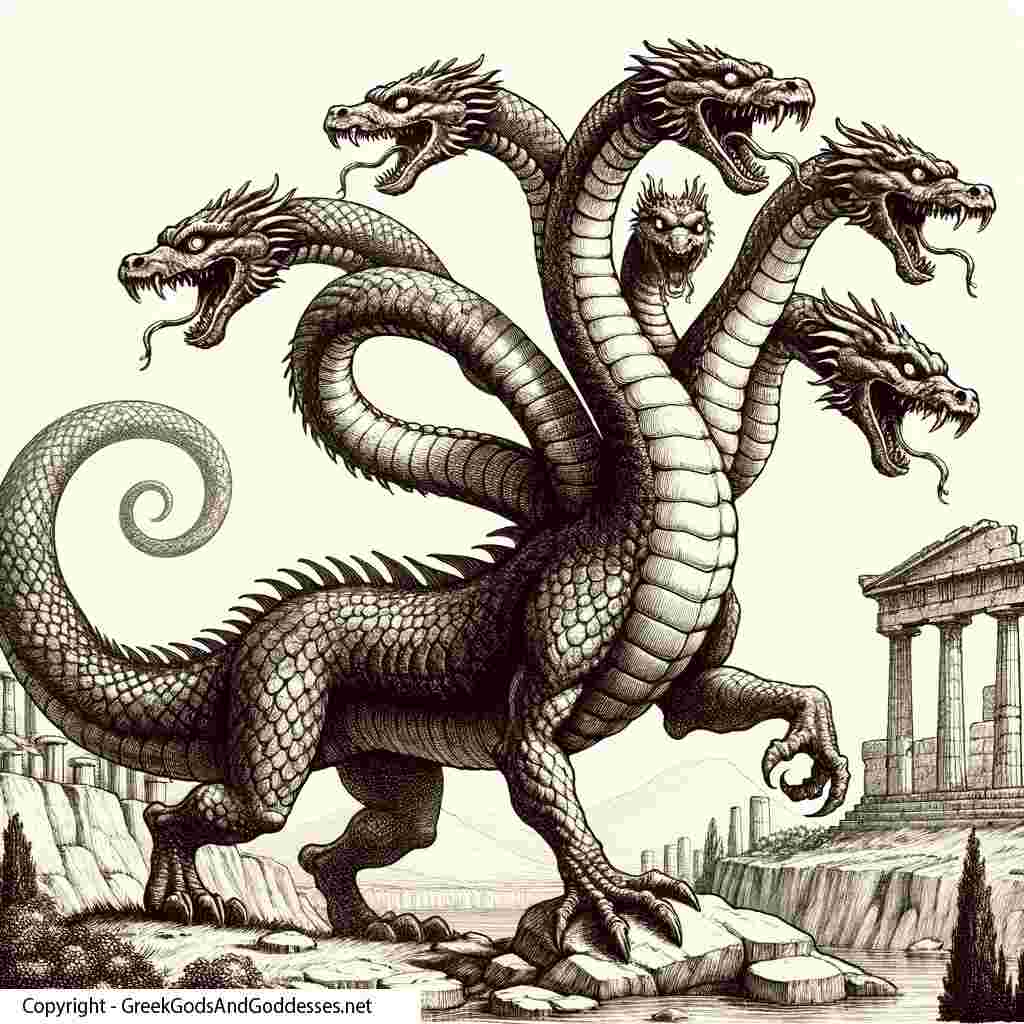
From its very inception, the Lernaean Hydra was destined to be a creature of legend. Early accounts describe it as having numerous heads—some say nine, while others suggest even more. This multiplicity of heads was not just a physical feature but a manifestation of its lethal power. Each head of the Hydra possessed venomous breath and toxic blood, making the mere presence of the creature a deadly threat to all living beings nearby. What made the Hydra even more formidable was its regenerative ability: for every head that was severed, two more would grow in its place, rendering it almost invincible.
The Hydra’s lair in Lerna was not chosen by chance. Lerna was considered a place of ancient mystery and darkness, with its swamps and springs believed to be entrances to the Underworld. This association with the Underworld only added to the Hydra’s mystique, painting it as a guardian of forbidden realms, a creature that thrived on the boundaries between life and death. The surrounding area of Lerna was often shrouded in mist, enhancing the eerie atmosphere and making it a perfect setting for the Hydra’s legend.
Early Greek poets and storytellers were captivated by the Hydra’s story, and it quickly became a staple of their mythological canon. The Hydra was not merely a monster; it was a symbol of the relentless and multiplying nature of evil, a challenge that seemed insurmountable even to the bravest of heroes. Its myth served as a cautionary tale, a reminder of the ever-present dangers lurking in the unknown, and the perpetual struggle between man and the forces of darkness.
As the legend of the Lernaean Hydra grew, so did its significance in the broader context of Greek mythology. It was not just a creature to be feared but a pivotal character in the saga of one of Greece’s greatest heroes: Hercules. The Hydra’s story was thus intertwined with themes of heroism, struggle, and the eternal battle against seemingly unbeatable odds.
Hercules and the Second Labor: Slaying the Lernaean Hydra
The tale of Hercules and the Lernaean Hydra is one of the most captivating episodes in Greek mythology, illustrating both the hero’s immense strength and his cleverness. The Lernaean Hydra, with its numerous venomous heads and regenerative powers, posed a challenge that seemed almost insurmountable. This task, known as the second labor of Hercules, was assigned to him by King Eurystheus, who hoped the Hydra would prove to be the hero’s undoing.
As Hercules approached the murky swamps of Lerna, he knew that brute strength alone would not be enough to defeat the Hydra. The creature’s lair was a desolate, fog-shrouded landscape, filled with the stench of decay and death. The Hydra emerged from its lair, a terrifying sight with its writhing heads and scales glistening in the dim light. Each head hissed and spat venom, a clear warning of the danger Hercules faced.
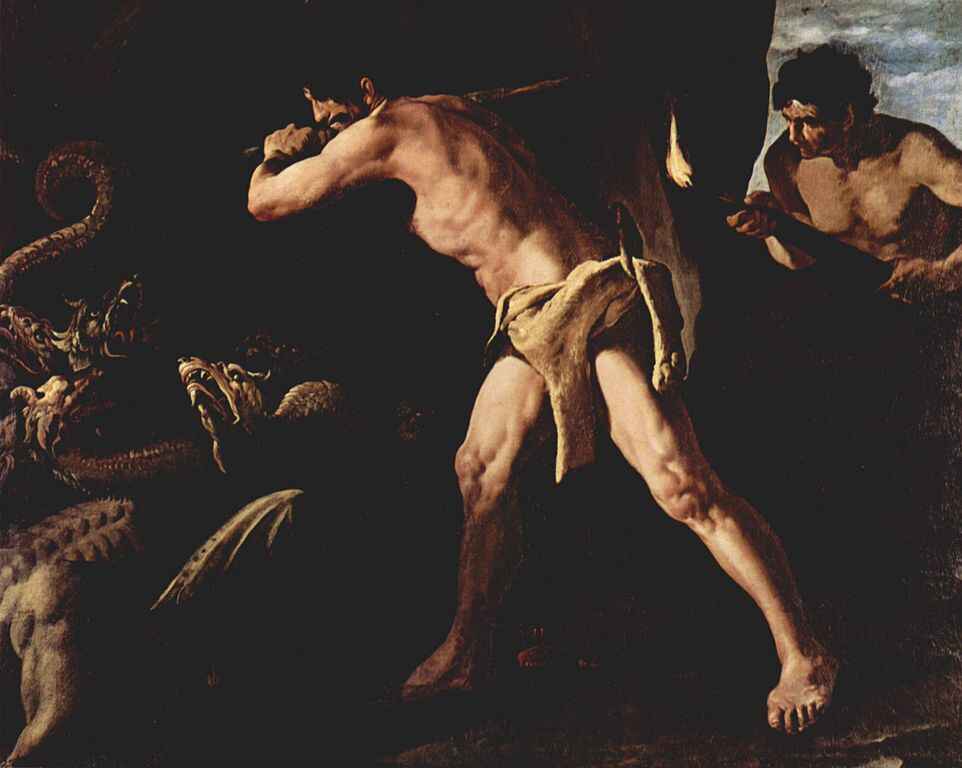
Hercules, undeterred, devised a plan. He first lured the Hydra out into the open by shooting flaming arrows into its lair. As the creature lunged at him, Hercules began the arduous task of decapitating its heads. However, with each severed head, two more would grow in its place, a testament to the Hydra’s regenerative prowess. The battle seemed endless, a grueling test of Hercules’ endurance and resilience.
Recognizing the futility of his efforts, Hercules called upon his loyal nephew, Iolaus, for assistance. Iolaus brought with him a torch, and together, they devised a new strategy. Hercules would cut off a head, and Iolaus would immediately cauterize the neck with the burning torch. This method prevented the heads from regenerating, gradually weakening the Hydra. Despite the creature’s fierce resistance, Hercules and Iolaus persisted, head by head, until only one remained.
The final head of the Lernaean Hydra was said to be immortal, impervious to conventional weapons. Hercules, using all his might, severed this last head and buried it under a massive boulder, ensuring it could never rise again. With the Hydra defeated, Hercules dipped his arrows in the creature’s toxic blood, making them lethal weapons for future battles.
This victory over the Lernaean Hydra was not merely a physical triumph but a demonstration of Hercules’ ingenuity and strategic thinking. It showcased the hero’s ability to adapt and overcome, turning seemingly impossible tasks into victories through sheer will and clever tactics. Hercules’ second labor thus became one of the most celebrated stories in Greek mythology, a testament to the hero’s legendary status and the enduring power of myth.
The Hydra’s Superpowers and Symbolism
The Lernaean Hydra, a creature of ancient myth, was endowed with an array of formidable powers that made it a nearly invincible opponent. Among its most fearsome attributes was its regenerative ability. This monstrous beast possessed multiple heads, and for each one that was cut off, two more would grow in its place. This power alone made the Hydra a symbol of resilience and the perpetuation of evil, a challenge that seemed to multiply rather than diminish under attack.
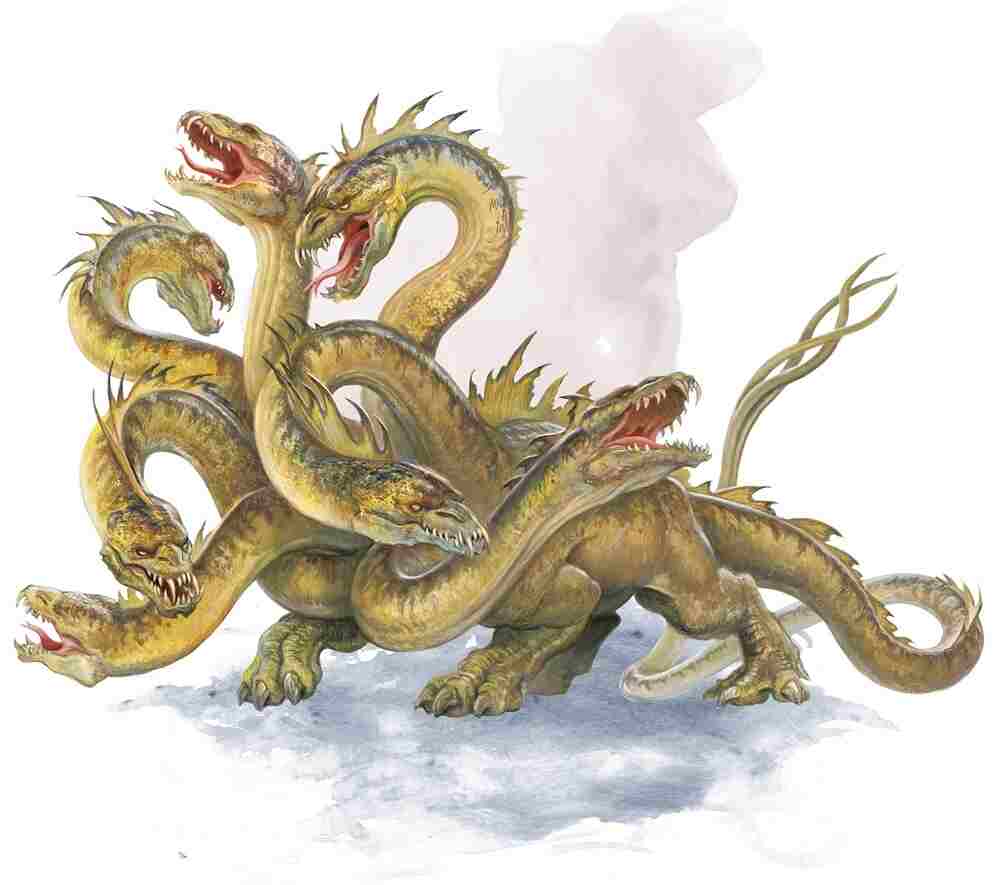
Another of the Hydra’s superpowers was its venomous nature. Each of its heads could exhale a deadly toxin, capable of killing anyone who inhaled it. The poison was so potent that even the Hydra’s blood and breath were lethal, spreading death and decay wherever it went. This toxic breath contributed to the aura of invincibility that surrounded the creature, as it could incapacitate foes before they even engaged in combat. The mere presence of the Lernaean Hydra turned the swampy region of Lerna into a place of death and desolation, feared by all who knew of its existence.
In addition to its regenerative and venomous powers, the Hydra also had an element of immortality. One of its heads was considered impervious to all weapons, rendering it impossible to destroy by conventional means. This head symbolized the undying nature of certain evils and challenges, which can be mitigated but never entirely eradicated. The immortality of this head added another layer of complexity to the myth, illustrating that some adversities require more than just physical strength to overcome.
The Lernaean Hydra was not just a creature of physical might but a symbol rich with meaning. In ancient Greek culture, the Hydra represented the manifold challenges and evils that one might face in life. Its ability to regenerate and grow stronger after each defeat mirrored the recurring and often multiplying nature of life’s difficulties. This symbolism was particularly potent in the context of Hercules’ labors, as his struggle against the Hydra illustrated the heroic qualities of perseverance, ingenuity, and strategic thinking.
The Hydra’s lair in the swampy marshes of Lerna also held symbolic significance. Swamps, often viewed as places of mystery and danger, were natural settings for creatures of myth. The murky, inhospitable environment of Lerna represented the chaotic and perilous aspects of the world, reinforcing the Hydra’s role as a guardian of dark and forbidden realms. The fact that Hercules had to venture into such a treacherous place to confront the Hydra further highlighted his bravery and determination.
In the grand tapestry of Greek mythology, the Lernaean Hydra stands out as a powerful symbol of the perpetual struggle between good and evil. Its superpowers and the rich symbolism they carry have ensured the Hydra’s place in myth and legend, serving as a reminder of the resilience and resourcefulness required to face the challenges that life presents.
Artistic Representations of the Lernaean Hydra
Throughout history, the Lernaean Hydra has captured the imagination of artists, inspiring a multitude of representations across various mediums. At Mystery Uncover, we delve into the fascinating world of ancient myths and legends, exploring the stories and symbolism behind some of history’s most enigmatic creatures. From the terrifying Lernaean Hydra to the cunning Sphinx from Greek Mythology, our articles offer in-depth analyses and insights into these captivating tales. From ancient Greek pottery to modern tattoos, the Hydra’s fearsome image and symbolic depth have made it a perennial subject of artistic expression.
The earliest depictions of the Lernaean Hydra can be found on Greek pottery and in sculpture. These artworks often accompanied stories of Hercules’ twelve labors, providing visual narratives that complemented the oral and written traditions. In these ancient pieces, the Hydra is typically shown with multiple serpent heads, each exuding a sense of menace. The craftsmanship of these early artists emphasized the creature’s formidable nature, with meticulous attention to the scales, heads, and the deadly environment of the Lernaean swamps.
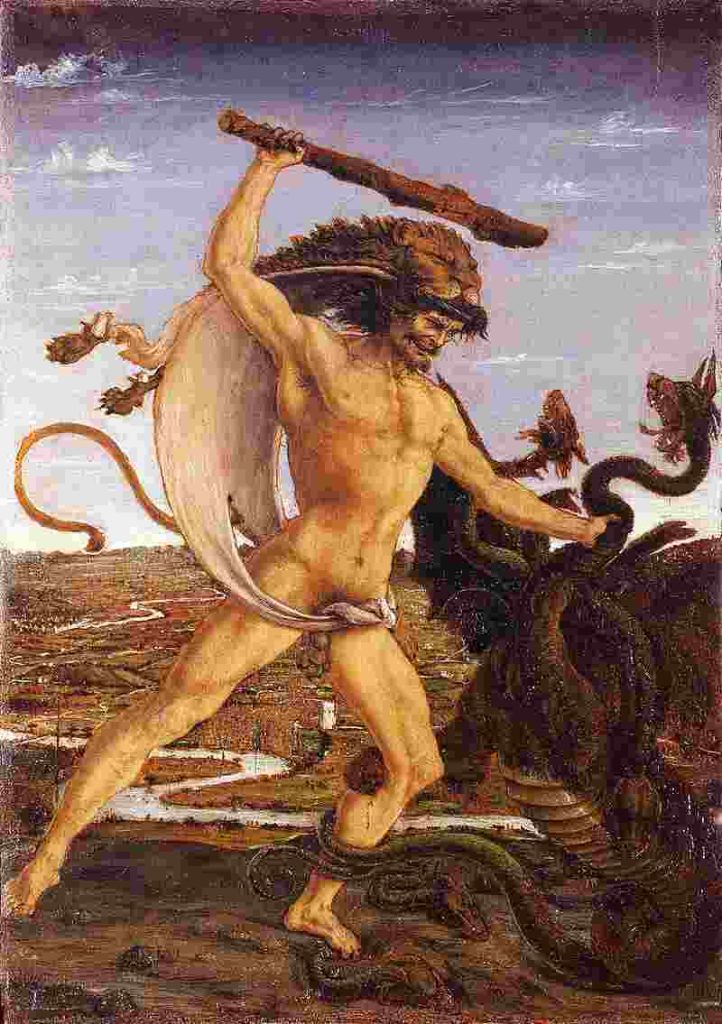
As the story of the Lernaean Hydra spread through the centuries, its depiction evolved, influenced by the artistic styles and cultural contexts of different periods. During the Renaissance, artists like Antonio del Pollaiuolo brought the Hydra to life in paintings and engravings. In these works, the battle between Hercules and the Hydra was often portrayed with dramatic intensity, highlighting the hero’s struggle against the monstrous creature. The Renaissance focus on humanism and anatomical precision added a layer of realism to these representations, making the mythological scene both vivid and relatable.
In the modern era, the Lernaean Hydra continues to inspire artists across various disciplines. Graphic novels and fantasy illustrations frequently revisit the Hydra, often reimagining it with even more heads and exaggerated features to amplify its mythical horror. These contemporary interpretations maintain the core elements of the Hydra myth while introducing innovative visual styles that resonate with today’s audiences.
Tattoos featuring the Lernaean Hydra have also become popular, symbolizing resilience and the ability to overcome great challenges. The Hydra’s multiple heads make it a compelling choice for body art, representing the idea that cutting off one problem often leads to the emergence of new ones. This interpretation keeps the myth alive in a personal and enduring form, etched into the skin of those who identify with its powerful symbolism.
Digital art and video games have also embraced the Lernaean Hydra, further cementing its place in modern popular culture. In games, the Hydra often serves as a formidable boss character, its heads requiring strategic targeting to defeat. This interactive medium brings the myth to life in a dynamic way, allowing players to experience the legendary battle against the Hydra firsthand.
Artistic representations of the Lernaean Hydra not only preserve the myth but also reinterpret it, ensuring its relevance across different eras and cultures. Each artistic medium offers a unique lens through which to view the Hydra, from the detailed narratives on ancient vases to the vibrant and imaginative portrayals in digital art. The enduring fascination with the Hydra underscores its significance as a symbol of indomitable challenges and the heroic spirit required to face them.
Frequently Asked Questions (FAQs)
1. What is the Lernaean Hydra?
The Lernaean Hydra is a mythical multi-headed serpent from Greek mythology. It was known for its regenerative ability, where cutting off one of its heads would result in two more growing in its place. It was ultimately defeated by the hero Hercules.
2. Where does the Lernaean Hydra live?
The Lernaean Hydra was said to inhabit the swamps of Lerna, a region in the Argolid near the eastern coast of the Peloponnesus. This area was considered to be shrouded in mystery and danger.
3. How many heads does the Lernaean Hydra have?
The Lernaean Hydra is traditionally depicted as having nine heads, though some versions of the myth suggest it could have had more.
4. How did Hercules kill the Lernaean Hydra?
Hercules killed the Lernaean Hydra by decapitating its heads and having his nephew Iolaus cauterize the wounds with a torch to prevent them from regenerating. He then buried the immortal head under a massive boulder.
5. How did Hercules slay the nine-headed Lernaean Hydra?
Hercules slayed the nine-headed Lernaean Hydra by cutting off each head and using fire to cauterize the necks, stopping new heads from growing. His nephew Iolaus assisted him in this task.
The Legacy of the Lernaean Hydra in Modern Culture
The Lernaean Hydra, a mythical beast from ancient Greek mythology, has transcended time and culture to become a lasting symbol in modern popular culture. Its legacy is evident in literature, films, video games, and even in the lexicon of everyday language. The Hydra’s tale of multiple heads regenerating upon decapitation has provided rich material for metaphor and storytelling.
In literature, the Lernaean Hydra has inspired countless adaptations and references. Authors of fantasy and science fiction often draw upon the Hydra’s regenerative powers to create similarly formidable creatures. The Hydra’s influence is visible in works ranging from classical literature, like Dante’s “Divine Comedy,” to modern series such as Rick Riordan’s “Percy Jackson & the Olympians,” where the Hydra appears as a daunting adversary. These contemporary stories borrow the essence of the Hydra, adapting it to new narratives while preserving its core attributes.
The film industry has also embraced the Lernaean Hydra, incorporating it into both animated and live-action movies. Disney’s “Hercules” (1997) features a memorable battle between the hero and the Hydra, showcasing its multiple heads and regenerative capabilities in a family-friendly format. More recently, films like “Clash of the Titans” (2010) have portrayed the Hydra in a darker, more realistic manner, emphasizing its monstrous nature and the heroic efforts required to defeat it.
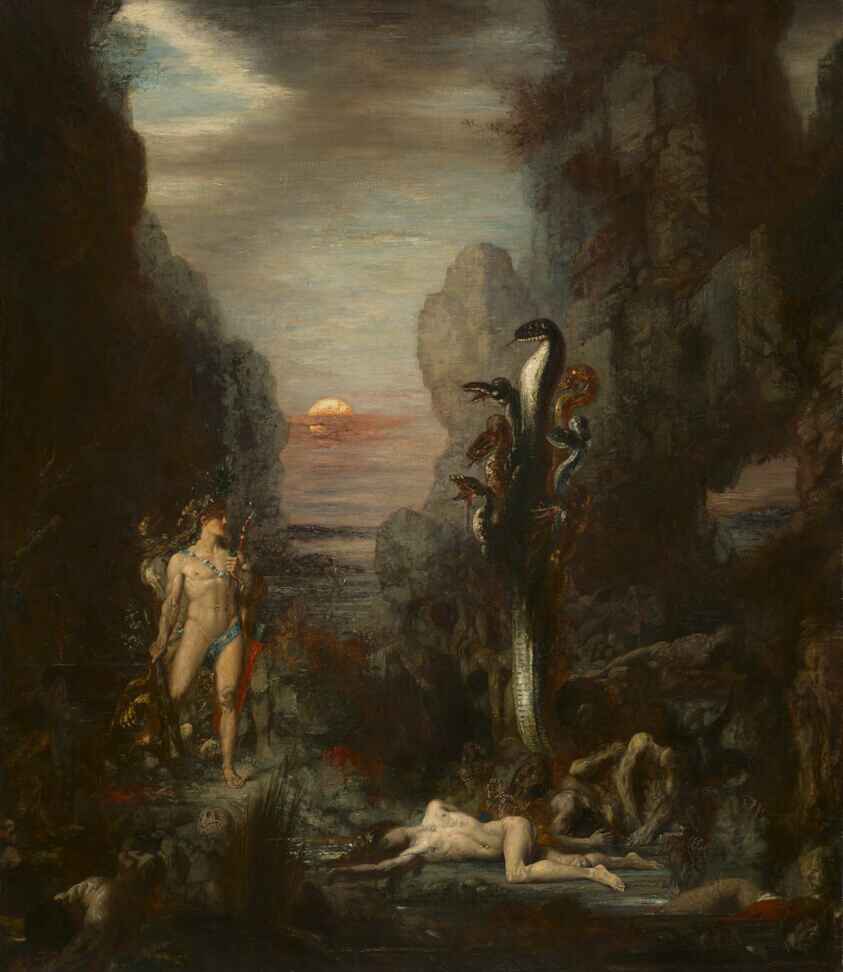
Video games have taken the legend of the Lernaean Hydra to interactive heights, allowing players to engage with the myth in dynamic ways. Games such as “God of War” and “Assassin’s Creed: Odyssey” feature the Hydra as a powerful boss character, challenging players to use strategy and skill to overcome its regenerative powers. These games often highlight the Hydra’s legendary status, making it a central figure in their epic narratives.
Beyond entertainment, the Hydra has permeated everyday language and symbolism. The term “hydra-headed” has come to describe complex problems that seem to multiply when solutions are attempted. This metaphor is used in various fields, from politics to medicine, illustrating the Hydra’s versatility as a symbol of enduring challenges. In medicine, for instance, researchers might refer to a “hydra-headed problem” when discussing diseases that are difficult to treat due to their ability to evolve and resist interventions.
The Hydra’s enduring presence in modern culture underscores its powerful symbolism and the universal themes it represents. Whether depicted in a children’s book, a blockbuster movie, or an immersive video game, the Lernaean Hydra continues to capture the imagination of audiences worldwide. Its story of relentless challenge and the heroism required to confront it resonates across different media, ensuring that the myth of the Hydra remains alive and relevant.
In academic circles, the Hydra is often studied as a symbol of ancient Greek mythology’s influence on contemporary storytelling and cultural motifs. Scholars analyze its regenerative powers and monstrous nature as reflections of humanity’s ongoing battle with seemingly insurmountable obstacles. Through this lens, the Hydra’s legacy is not just a tale of heroism but a testament to the enduring power of myth to shape and inform our understanding of the world.
Use of Our Content
⚠️ Content on “Mystery Uncover” is protected under US and International Copyright Laws.
You are free to reuse, republish, and share our content by giving credit to the source as Mystery Uncover with a link to the original material on mysteryuncover.com.


